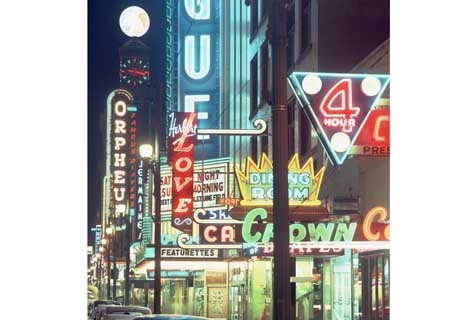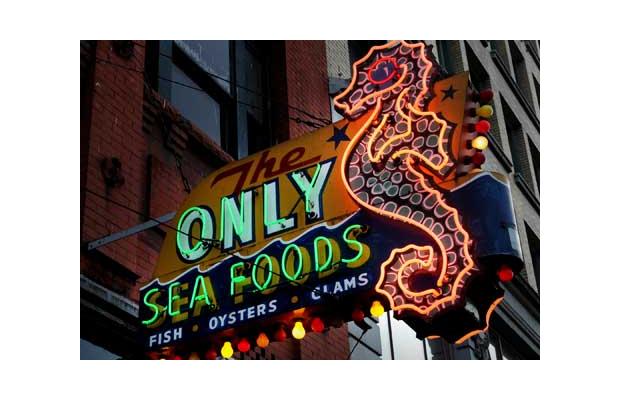Adapted from The Province by Nila Gopaul
Neon signs are electric signs.
They contain neon and other gases.
The signs are made of glass tubes.
These tubes are bent
and made into interesting shapes
with different colours.
In the 1950s, Vancouver had 19,000 neon signs.
This means that there was one sign
for every 18 people!
The only city with more neon signs
per capita* was Shanghai.
*per capita – per person/per head
Click here to see photos of Vancouver (then and now).
Click the photos
to see how the places have changed.
History of neon signs
In 1675, a French astronomer, Jean Picard,
discovered neon sign technology.
The first neon lamp shone in Paris
on Dec. 11, 1910.
A Paris barber bought the first neon sign in 1912.
The golden age of neon was the 1940s and ’50s.
The signs were very popular in the United States
from about 1920–1960.
In Vancouver, some people thought neon signs
added excitement to the streets.
Other people felt neon made the streets look cheap.
Today many artists and architects
use neon lighting.
Links

